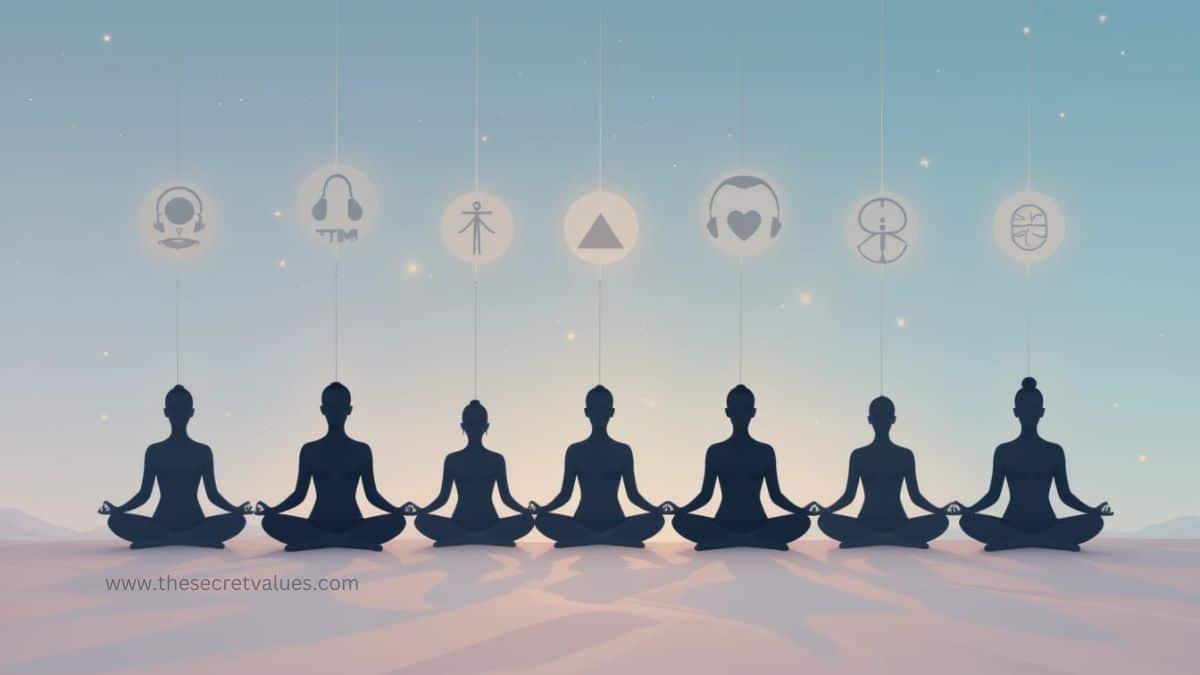Introduction
Are you searching for more profound peace and connection in your life? Learning how to do spiritual meditation can be transformative, helping you find inner peace and spiritual awareness. Many people struggle with stress, anxiety, and the constant rush of daily life. Meditation provides an opportunity to take a step back and gain some perspective, as well as access something larger than yourself.
Spiritual meditation is not just about relaxing; it’s about awakening your soul, gaining clarity, and fostering inner peace. If you’re wondering how to meditate spiritually or looking for a step-by-step guide, you’re in the right place. So, let’s take a look at the steps you need to take to start this deep process as well.
Step-by-Step Guide on How to Do Spiritual Meditation
1. Find a Quiet and Sacred Space
The environment where you meditate plays a massive role in your experience. A calm, quiet space free from distractions allows for a deeper spiritual connection.
Creating a Meditative Atmosphere at Home
- Choose a space with minimal noise and interruptions.
- Light candles or incense to enhance the sacred feeling.
- Set the mood with something spiritual, like a little altar or crystals.
2. Choose a Comfortable Posture
Your posture can affect your ability to focus and relax. Some people prefer sitting, while others find lying down more comfortable.
Sitting vs. Lying Down: Which is Better?
- Sitting with a straight spine helps maintain focus and energy.
- Lying down is suitable if you struggle with tension, but it may lead to sleepiness.
Importance of Body Alignment in Meditation
- Maintain a straight backbone so the energy can flow.
- Relax your shoulders and hands in a natural position.
3. Focus on Your Breath
Breathwork is the foundation of all meditation practices. A steady, mindful breath helps calm your mind and deepen your spiritual connection.
How to Control Your Breathing for Spiritual Clarity
- Breathe in your nose, and then slowly breathe out of your mouth.
- Please watch each breath and let thoughts pass without clinging to them.
4. Set an Intention or Mantra
Mantras and intentions help your meditation go where it needs to or deepen your focus.
Choosing the Right Mantra for Spiritual Growth
- A mantra can be a sacred word, a short phrase, or a prayer.
- Some common mantras include “Om,” “I am peace,” or “I am light.”
5. Practice Deep Awareness and Letting Go
To fully experience spiritual meditation, let go of expectations, stress, and distracting thoughts.
How to Release Negative Thoughts
- When negative thoughts arise, acknowledge them without judgment.
- Pay attention to your breath or mantra again pretentiously.
6. End with Gratitude and Reflection
Always conclude your meditation with gratitude. Acknowledging your experience helps integrate the benefits into daily life.
Journaling and Self-Reflection After Meditation
- Note down any reflections or feelings you had about it.
- Reflect on your progress and set intentions for future sessions.
How to Meditate Spiritually for Beginners
Starting a new meditation practice can feel overwhelming, but it doesn’t have to be.
- Start with 5-10 minutes a day and build it up!
- Try guided meditations to help structure your practice.
- Be patient with yourself—spiritual growth takes time.
How to Meditate at Home for Beginners
Practising at home can be highly beneficial if you’re new to meditation.
- Choose a specific meditation spot and stick to it.
- Turn off notifications and limit distractions.
- Use calming music or meditation apps to guide you.
Spiritual Meditation for Peace and Healing
Meditation is the most potent practice for achieving inner peace and healing emotions. Regular practice can lower stress, improve emotional stability, and enhance spiritual connection.
- Meditation helps you let go of past trauma and find emotional balance.
- Connecting with your inner self can bring a sense of purpose and clarity.
Common Mistakes to Avoid in Spiritual Meditation
- Expecting immediate results—meditation is a journey, not an instant fix.
- Forcing thoughts away—instead, observe them without attachment.
- Skipping daily practice—consistency is key to spiritual growth.
Benefits of Spiritual Meditation
- Greater emotional stability
- Deeper spiritual awareness
- Improved concentration and clarity
- Reduced anxiety and stress
Conclusion
Meditation can open the doors to peace, clarity, and spiritual awareness. Start with small steps, be consistent, and allow yourself to grow in the process. Your journey toward inner peace begins today—why not take the first step?
FAQs
1. How long should I meditate spiritually each day?
Start with 5-10 minutes and gradually increase to 20-30 minutes for more profound experiences.
2. Can I meditate spiritually without a mantra?
Yes! Mantras help focus your mind, but silent meditation works just as well.
3. What is the best time of the day for spiritual meditation?
Morning is ideal, but the best time is whenever you can practice consistently.
4. Do I need to follow a specific religion for spiritual meditation?
No! Spiritual meditation is for everyone, regardless of religion.
5. How do I stay focused while meditating?
Use breath awareness, guided meditation, or a mantra to maintain focus.








1 thought on “How to Do Spiritual Meditation: 6 Powerful Steps”